
Mountain Streams --Vol.1--

The upper stretch of Nishinomata in the Kimpusan River around 1973. There was no fly fisherman except for us in the river in those days.
Char in the Kimpusan River
Under the scorching sun flowed down the cold and clear water, making white foam here and there. The white foam, which was reflecting the sunshine, nearly blinded my eyes. I really loved to walk up creeks and it had long been my favourite event during the midsummer.I prefer brighter creeks. Large triangle granite, rhododendron spread on the banks, fresh green of larch and even flies drifted on the water; all are glittering as if they were in the spotlight.
I remember that my fishing in such bright creeks began with a certain place in 1972. On June 30, my friend and I travelled south from Komoro about in the centre of Japan, passed by Lake Matsubara and arrived in the evening at Kawakami village near the Chikuma River.
The next day the weather changed suddenly. It became very fine from morning without a cloud in the sky.
I cannot forget the exact date due to the dramatic change of the weather. The rainy season was over on July 1, exceptionally earlier than usual. I have not experienced nor heard of such case. Although I was not sure what the Meteorological Office said, the rainy season was over at least in my area around the Chikuma River.
The upper stretch of Nishinomata in the Kimpusan River around 1973. There was no fly fisherman except for us in the river in those days.
At that time almost no angler cast the fly rod in mountain streams except at Yohzawa in Itsukaichi in the suburbs of Tokyo. Fishing in the Chikuma River in those days looks completely different from today. I was just muttering there, " I wish it were cloudy. How unlucky I am to have such a clear sky without a cloud!" However, I was all excited at the thought of fishing a strange river, a strange mountain stream.

A typical char in mountain stream.
The beating of my heart grew stronger. Full of happy expectation, I headed for a tributary called the Kimpusan River and tried to fish upstream towards a small creek named Nishinomata in the map, after parting from my friend.
The bed of the Kimpusan River is covered with granite, unusual in the Chikuma River system. The whole banks glitter dazzlingly when the sun shines. The water is as clear as distilled one, so we can see even the bottom of the deep pool. That means most anglers thought that they could catch fish there only at sunrise and sunset or on a cloudy or light rainy day.
I was well aware of the general idea but fishing upstream in the strange creek gave me such pleasure that I did not mind it.
On the strike
It was 8 o'clock in the morning, if I am not wrong. The creek had already had a sign of the daytime. I walked into it, picked up size 12 Royal Coachman from my fly box and put it to 3 lb leader. At that time the epoch-making line called tapered leader had not produced yet.
Royal Coachman. In the 70s, this was the most popular dry fly in Japan.
I began to cast my dry fly. At the second point jumped something at the fly. Instinctively I lifted the rod but could not feel a tug. I wondered why and looked at the leader tip. My fly was gone! Oh, no! But what's done is done. Anyway, there was no doubt that it was a fish that jumped at my fly because it broke my leader. I was rather satisfied to know that.
I've got it! There are fish here!
Surely there were a lot of fish there. But before I caught a char by my hand to recognize it as a beautiful one, I had lost other several flies in the same way. I began to regret that I should have chosen 4 lb leader as usual, instead of 3 lb one, when I saw a water fall in front of me, which seemed to block my fishing upstream. Perfectly clear water was falling down as if several lines of silk threads had been flowing down. I walked there from downstream, and looked into the deep pool, where all the falling water gathered, when I was taken back and stopped suddenly. I found a large char floating on the water with its back turning to me.
I moved carefully so that the char did not notice me. Then I stood behind it. It was at most 5m between the char and me. Ignoring me, the char sometimes swayed from side to side and caught something that came drifting to it. When it turned its face away, I could see its large eye clearly.

Gentle stream in the lower Nishinomata.
I made a false cast carefully so that the fly reached the water surface 1m ahead of the char. Immediately I let go of the line from my left hand.
The fly was carried to the char along the flow. When the distance between them became a third as short as that in the beginning, the char swam close to the fly with its dorsal fin on the surface and swallowed it in one gulp. At least it seemed so to me. I lifted the rod carefully and slowly. But for some reason the fly returned to me too smoothly.
What happened? I wondered. In the next moment the scene hit me that the char was mad about looking for the bait that it was about to take but suddenly disappeared. Oh dear. It hadn't held the fly in its mouth yet.
I cast the fly carefully again. The fly dropped a little nearer to the char. Then the char dashed to it at much higher speed than the previous time and held it firmly. I will get this time for sure! No sooner had I hooked it up than my reel rattled. The reel was reversed since I did not hold the line. That was why I could prevent the char from breaking the leader.
The char was taken from the water with its round body swaying from side to side. It was nearly 12 inches long.
After I passed the water fall char jumped at my fly one after another. I caught several char in no time. Knowing that the appointed time to meet my friend was drawing near, I walked back the bank with painful reluctance.

A nice char caught by Black Gnat.
Dry fly under the burning sun
In spite of short time fishing, it brought me a discovery. Above all it was very new to me that char jumped at the dry fly under the burning sun in the dazzling midsummer. Now no angler doubts that we can catch char in the midsummer daytime. But nearly 30 years ago at the dawn of fly fishing in Japan no angler believed that. On the contrary, an article was reported in a fishing journal, that said, " Fly fishing, which uses a very thick line, might be suitable to get a rainbow trout, a foreign fish. But it is impossible to get a smart Japanese trout in mountain streams." Later when it was reported that a fly fisherman landed Japanese yamame trout, an article was written, "Even if a yamame trout is caught, it will be impossible to get a char."Even fly lovers, who were a tiny minority yet, believed that it was impossible to use dry fly in mountain streams. In that time of adversity I could not help feeling fresh and happy to fish char with dry fly in a really bright stream under the burning sun in midsummer. Since then I have had no hesitation in fishing creeks in daytime.
The next week I was dying to go to the Kimpusan River again. I prepared 4 lb leader and my fly box full of Royal Coachmen and walked into Nishinomata again. In a week the water decreased and the creek flowed slowly here and there, that had been covered with white foam. The sky was still clear and stronger sunbeam poured on the stream.

Beautiful rhododendron blooming profusely around Nishinomata.
Char appeared in almost all spots, as I had expected. As I caught some char I noticed one thing that all the char that jumped at my fly moved very slowly. Not only char but also yamame trout, which were in the mainstream and a tributary where I dropped in on my way back, moved very slowly, too. At first I thought that lack of anglers made fish careless. For there was not a single angler around except for us. Then I realized that fish suddenly moved very fast when the evening was drawing near. It was exclusively during the daytime that fish came to the fly slowly.
The two weeks and three weeks later I walked around the bank in the Kimpusan River again, which fascinated me. I spent nearly a month in fishing across most parts of the main stream and both west and east tributaries. Plenty of fish lived in each area and I could enjoy seeing how fish moved in different situations of the stream. But as the days passed, fish responded more slowly. They were better described as lazy than slow. When the fly began to drift on the water surface they did not come up to it soon but waited until it drifted overhead of their territory. Particularly, fish living at the tail of the current appeared just when the fly was about to fall down stream.
In 1972 I happened to start fishing in the very day when the rainy season was over and could see the change of fish response without disturbance. Since then the phrase "ten days after the rainy season is over" has been mentioned among anglers. The heaven for fly fishermen is born and lasts for ten days in a stream in a high mountain or in the heart of a mountain after the rainy season is over. Needless to say, it does not matter whether the first day is July 1 or later.
-- To be continued --
- NET SHOP INFORMATION
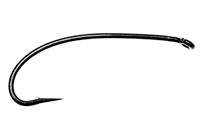
SL6 Black Spey Hooks
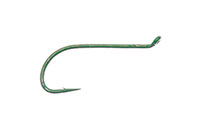
DU3 Limerick Spinner Hooks
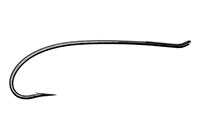
SL4 Single Bartleet Hooks
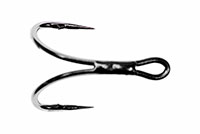
XD1 Tube Fly Double Hooks
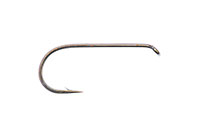
DD2 Flat Perfect Hooks
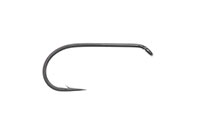
DD1 Black Terrestrial Hooks
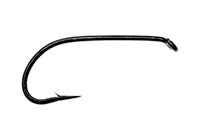
TD4 Old Limerick Wet Hooks
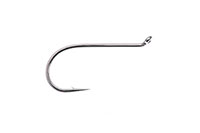
DU1 Silver May Hooks
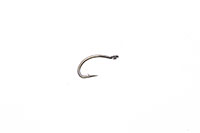
MU1 Flat Midge Hooks
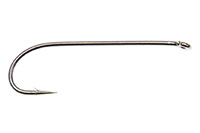
LD3 Long Limerick Hooks
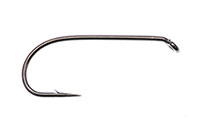
TD2 Summer Sproat Hooks
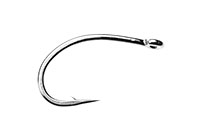
XS1 Tube Single Silver Hooks
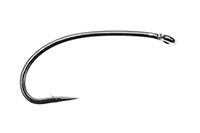
TD6 Siver Sedge Hooks

SL5 Black Spey Hooks

DU3 Limerick Spinner Hooks
- TROPHY CLUB
- FLY SHOW
- EXHIBITION
- MASTERS`
- FLY DRESSING CONTEST Archives
- TRAVELLER Archives
- TACKLE IMPRESSIONS Archives
- ANGLERS` PHOTO GALLERY Archives
- ----------------------------------------------
- トロフィークラブ
- フライショー
- エキシビション
- マスターズ
- フライドレッシング・コンテスト・アーカイヴ
- トラヴェラー・アーカイヴ
- タックル・インプレッション・アーカイヴ
- アングラーズ・フォトギャラリー・アーカイヴ
株式会社サワダ 185-0021 東京都国分寺市南町3-13-4
SAWADA'S INC. 3-13-4 Minamicho, Kokubunji, Tokyo 185-0021, Japan
写真・ドキュメントの無断転載を禁じます。
All the images and documents found on this site are owned by Ken Sawada and may not be used without permission.
But, link to this site is FREE.
Copyright © 2000 - 2024 SAWADA'S INC.. All rights reserved.
SAWADA'S INC. 3-13-4 Minamicho, Kokubunji, Tokyo 185-0021, Japan
写真・ドキュメントの無断転載を禁じます。
All the images and documents found on this site are owned by Ken Sawada and may not be used without permission.
But, link to this site is FREE.
Copyright © 2000 - 2024 SAWADA'S INC.. All rights reserved.
